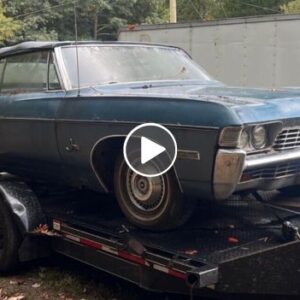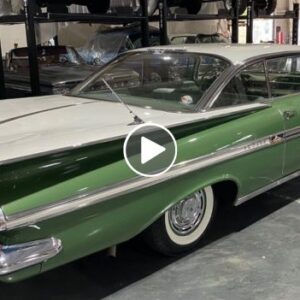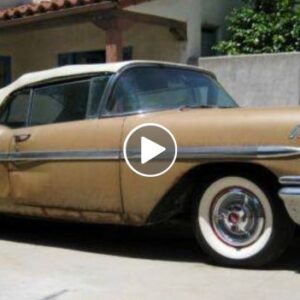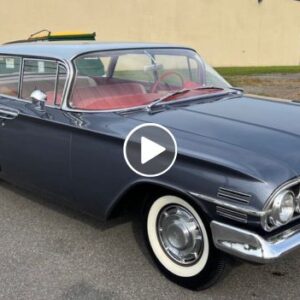In the early 1970s, American Motors initiated a program to associate its products with well-known fashion designers and companies. There was the Gucci-edition AMC Hornet and the Oleg Cassini-edition AMC Matador, while the wacky AMC Gremlin wore the red tab of Levi’s denim. The most sought after of these was the Pierre Cardin-edition AMC Javelin because Cardin was the fashion industry’s most transcendent figure and this pony car was AMC’s standard bearer of sportiness. Cardin’s designs were seen not only in clothing but also in personal accessories, restaurants, furniture, and even on a record label.
Later, it became commonplace for carmakers to offer designer editions of various models, which included the Gucci-edition Cadillac Seville and the Bill Blass, Cartier, Givenchy, and Pucci Lincoln Continentals. We’ve become accustomed to such co-marketing these days, which includes associations with not just fashion-forward design icons but also products such as bicycles, shotguns, and watches. But back then, Wisconsin-based AMC was in the vanguard of infusing fashion into otherwise ordinary cars.

The Cardin Javelin is arguably the most fully realized of all the designer-branded cars of its early era. The interior is truly a spectacle, with pleated upholstery stripes in plum, orange, white, and silver against a black background. The environment is flamboyantly psychedelic, although tailored in the manner of a fashion designer. In period print advertising for the car, Monsieur Cardin (AMC included a phonetic spelling of the name, Kar-dán) commented, “People should feel like they’re sitting in a living room instead of sitting in a machine.” That is, of course, if your living room is done up in space-age style on par with a discotheque in Saint Tropez or perhaps a movie set from Barbarella. The décor package was optional for all 1972 and ’73 Javelins for a mere $84.95 and included exterior badging.

The second-generation Javelin is fairly outlandishly styled on the outside, too. Front fenders bulge through the hood line, while the rears intrude on the C-pillar. There’s a spoileresque bump where the roof meets the concave rear window, and a big rubber ducktail sets things off at the rear. It seems clear that AMC designer Eric Kugler had been inspired to deliver a little racing-bred detailing to accommodate wider tires and create more effective aerodynamics, and all this helped Roger Penske’s racing team win the SCCA Trans-Am championship with the Javelin in 1971 and 1972. Beneath the flashy styling could be found humble hardware: the sedan architecture of the AMC Hornet/Rambler American.
The Cardin-edition Javelin debuted in the 1972 model year and was offered in ’73 as well. Some 2,952 examples hit the street in this time, plus a further 1,200 Cardin editions of the AMX. This first-year car is owned by filmmakers P. David Ebersole and Todd Hughes. After buying a house in Palm Springs, California, that had been built in 1969, they set out to furnish it in period-correct style. First they happened on a Cardin-designed coffee table. Next came a mirrored Cardin credenza, and so on. They became crazed by all things Cardin, for, as Ebersole notes, “Nobody before had ever taken a fashion name into all these areas.”

Ebersole and Hughes had considered acquiring a Chevrolet Corvair to suit the mid-century modernism for which the style of residential architecture in Palm Springs has become famous, but the Cardin connection helped them discover the Javelin, which better matches their home’s 1970s vibe. A frenzied search on the internet led them to purchase a 1972 Javelin SST in faraway Osler, Saskatchewan. Though it had comparatively low mileage, the AMC had been restored in recent years by its loving owner. “We don’t drive it all that much,” Hughes reveals, “but when we do, we have to leave ourselves an extra 15 minutes.” The cushion is for the inevitable conversations that are inspired wherever the Cardin-edition Javelin SST goes.

Our time at the wheel reminded us that the Javelin is not a sports car, but it does hold its own in the corners. This very torquey 360-cubic-inch V-8 was rated at notably less power in 1972 than the year before, but only because the DOT-certified rating system had changed from SAE gross (without accessories) to SAE net (with accessories). Disc brakes were available as an option in 1972, but this SST has the standard drums, so it’s best to plan ahead when slowing down. The black nylon upholstery of the Cardin edition incorporates a special, silicone-based stain-resistant finish (something new in 1972), and the seats are very slippery as a result. Maybe it’s a good thing that the shift lever for the three-speed automatic has a grab handle.

AMC deserves credit for staying at it as long as it did with singular products such as the Pierre Cardin Javelin. The audacity of this car in design as well as performance speaks very well of AMC’s ingenuity and improvisation as it tried to be competitive against monumental odds. What other company would have come up with the idea of joining forces with a French fashion designer for a special edition of a macho Mustang-style car? The funny thing is, it kind of worked.


Mustang? Camaro? So commonplace. They were produced in significant numbers with scads of survivors. The Javelin, on the other hand, never generated much sales volume, of which the Cardin cars were just a fraction. Among collectible makes, AMC is a sleeper at best, and values have nowhere to go but up. The Javelin is an affordable totem of that sybaritic age of the late 1960s and early 1970s, more a social document than a mere car. The glittery disco era was dawning when the Cardin-edition Javelin rolled down the assembly line in blue-collar Kenosha, Wisconsin. It’s mechanically sound, vaguely quick, and a symbol of decadence from a company that had previously known success only with the dowdy, fuel-sipping Rambler.





